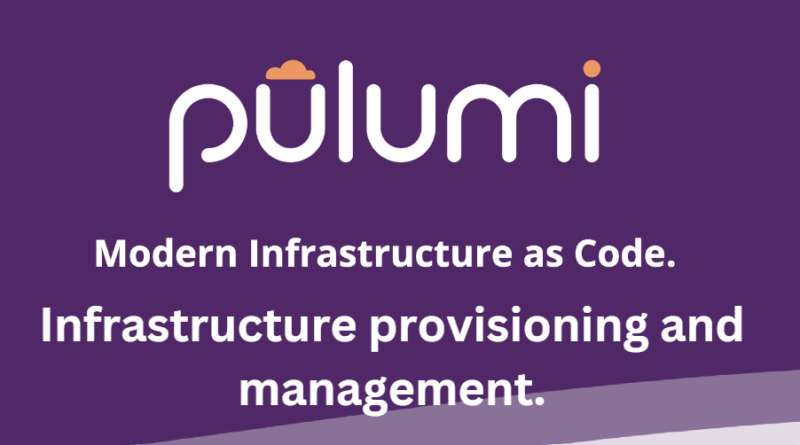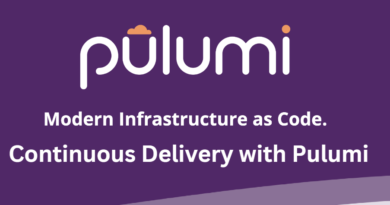Infrastructure as Code: Leveraging Pulumi for infrastructure provisioning and management.
Infrastructure as Code (IaC) is a methodology that treats infrastructure configurations as code, enabling developers and operations teams to automate the provisioning, management, and deployment of infrastructure resources. Traditionally, infrastructure provisioning has been a manual and error-prone process, requiring time-consuming and repetitive tasks. IaC tools, such as Pulumi, provide a powerful solution to address these challenges by allowing infrastructure to be defined, versioned, and managed through code.
Pulumi is an open-source IaC tool that empowers developers to provision and manage infrastructure resources using familiar programming languages, including JavaScript, TypeScript, Python, and Go. This unique approach to IaC offers several benefits and advantages over traditional declarative approaches.
One of the key advantages of leveraging Pulumi for infrastructure provisioning is the ability to use familiar programming languages. Developers can express infrastructure configurations using the same languages and tools they use to build applications, eliminating the need to learn and manage additional declarative languages specific to infrastructure provisioning. This convergence of application and infrastructure code simplifies the development process and promotes collaboration between developers and operations teams.
By utilizing programming languages, Pulumi enables developers to leverage the full power of their chosen language. This includes features such as type-checking, autocompletion, and code refactoring, which improve code quality and catch errors early in the development cycle. Developers can apply well-established software engineering practices, such as code review and testing, to infrastructure code, ensuring its reliability and stability.
Pulumi’s support for multiple cloud providers, including Amazon Web Services (AWS), Microsoft Azure, Google Cloud Platform (GCP), and Kubernetes, makes it a versatile choice for organizations adopting a multi-cloud or hybrid cloud strategy. Developers can write infrastructure code once and deploy it across different cloud environments, avoiding vendor lock-in and maximizing flexibility. This unified approach to infrastructure provisioning simplifies the management of complex and heterogeneous cloud architectures.
Another key benefit of using Pulumi is the ability to define infrastructure configurations as code, which brings several advantages. Infrastructure code can be version-controlled using industry-standard tools such as Git, enabling teams to track changes, collaborate, and roll back to previous configurations if needed. This promotes reproducibility and facilitates collaboration among team members.
Pulumi introduces the concept of “Stacks,” which allow developers to manage different configurations of infrastructure deployments. Each stack represents a distinct deployment target, such as a development, staging, or production environment. Stacks enable developers to maintain separate infrastructure configurations for different environments while sharing common infrastructure code. This modular approach enhances maintainability, promotes reusability, and facilitates the management of infrastructure as code at scale.
Furthermore, Pulumi provides a component-based approach to infrastructure provisioning. Components are reusable pieces of infrastructure code that encapsulate a set of resources and their associated configurations. Developers can create and share components to build more complex infrastructure configurations, promoting consistency and reducing duplication of code. This modularization enables teams to leverage pre-built components and accelerate the development process.
Pulumi also offers real-time infrastructure updates, which streamline the development and deployment cycle. When changes are made to the infrastructure code, Pulumi automatically determines the required updates and applies them to the deployed resources. This immediate feedback loop allows developers to iterate quickly, test changes, and see the results in real-time. Pulumi’s intelligent update engine optimizes the deployment process, minimizing disruptions and reducing deployment time.
Security is a crucial aspect of infrastructure provisioning, and Pulumi provides features to ensure the security of infrastructure deployments. It supports secrets management, allowing developers to securely store and manage sensitive information, such as API keys and passwords, without exposing them in the infrastructure code. Pulumi also integrates with cloud provider security services, enabling developers to leverage identity and access management (IAM) policies and encryption mechanisms provided by the cloud platform.
The Pulumi community is another valuable aspect of using Pulumi for infrastructure as code. The community actively contributes to the development of libraries, plugins, and documentation, providing valuable resources for developers. This vibrant community shares best practices, tips, and real-world examples, fostering knowledge exchange and collaboration among users.
In summary, Pulumi is a powerful infrastructure as code tool that offers several advantages for infrastructure provisioning and management. By leveraging familiar programming languages, supporting multiple cloud providers, enabling real-time updates, and promoting modularization, Pulumi brings the benefits of software engineering to infrastructure provisioning. With Pulumi, developers can automate and streamline the deployment of infrastructure resources, increasing productivity, enhancing collaboration, and ensuring the reliability and security of their cloud architectures.




